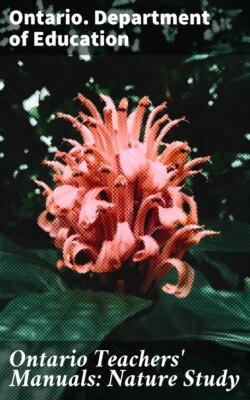Читать книгу Ontario Teachers' Manuals: Nature Study - Ontario. Department of Education - Страница 42
На сайте Литреса книга снята с продажи.
A TYPE EXCURSION
ОглавлениеA Bird's Nest.—The children have been instructed to study the meadow-lark, beginning about March twenty-first. While engaged in this work, a nest is discovered near the school. The teacher is informed and the pupils are conducted to the spot.
What is growing in the field? Is there a long or a short growth? Did the mother bird make much noise as she rose from the nest? Did this help to reveal its presence? Is the nest easy to see? The class will halt a few paces from it and try to find it. How many eggs? Their colour? Note the arch of grass so beautifully concealing the nest.
Returning to school, the facts observed are reviewed. The pupils may then express themselves by written composition or by drawings, paintings, or modellings of the nest, the eggs, or the surroundings. Frequent visits to the nest should not be made, and the pupils should be warned not to disturb the bird, as she may desert the nest on slight provocation.
A second excursion may be made, when the eggs are hatched, to see the young birds.
A Wasp's Nest.—A nest having been discovered, the pupils note how it is suspended and how it is situated with regard to concealment or to protection from rain, its colour, the material of the nest, and the position of the entrance. Is the opening ever deserted? How many wasps enter and how many leave the nest in a minute? Try to follow one and watch what he does. Wasps may be found biting wood from an old board fence. This they chew into pulp, and from this pulp their paper is made. Get the children to verify this by observations. If the nest is likely to become a nuisance, smoke out the wasps, take the nest carefully down, and use it for indoor study, examining the inside of the nest to ascertain the nature and the structure of the comb which, in this case is entirely devoted to larvæ.
